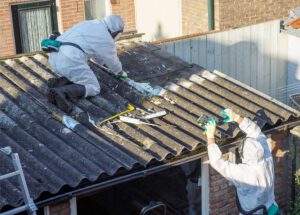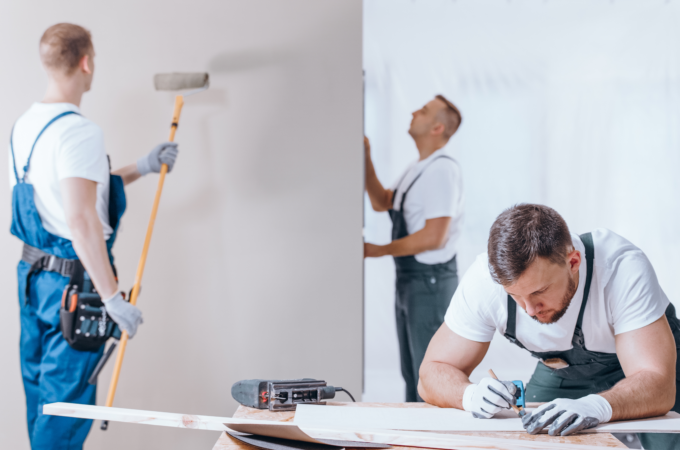Asbestos Home Demolition
Asbestos Fence Removal Perth exposure is linked to lung cancer and mesothelioma, both of which are fatal. Lung cancer develops within the respiratory system, while mesothelioma develops in the abdominal cavity.
Asbestos-containing materials (ACMs) should only be handled by professionals who have completed federal and state-approved training courses. These professionals should also provide documentation of their certification and licensing.

Asbestos is present in thousands of buildings throughout the country. Asbestos was widely used because of its cheapness, fire heat protection, and good insulating qualities. Asbestos-containing materials (ACMs) remain in many buildings even after they have been demolished. If these materials are left undisturbed, they pose no threat to health. When these materials are disturbed, the danger arises, as they can release asbestos fibers that can be inhaled.
When ACM is involved in demolition, specific building inspection and abatement requirements must be followed. EPA regulations, known as the National Emissions Standard for Hazardous Air Pollutants (NESHAPs), require a complete and accurate inspection of the entire structure to be performed before any work can begin on a demolition that involves ACM. This includes reviewing previous inspection reports to determine whether or not the inspection procedures and sampling of suspect ACMs meet current standards. Blueprints and “as built” drawings of the building may also be reviewed to determine the location of the ACM.
During the demolition, the asbestos abatement contractor must seal the work area from the rest of the house using plastic sheeting and duct tape to prevent dust from spreading from the work site. The HVAC system should be turned off during this time as well. Workers should wear respirators to protect themselves from airborne asbestos, and the area should be marked as a hazard zone. It is also a good idea to have family members stay away from the demolition area until it is completed.
It is essential to hire only accredited, professional asbestos abatement contractors for any work involving asbestos. A thorough background check should be conducted on the prospective abatement company, including verification of credentials, experience, and reputable references. It is a good idea to get quotes from several companies and select one based on the overall evaluation of services rather than solely on cost.
It is also wise to consider hiring a separate firm to monitor the abatement process. This firm will not be affiliated with the company that does the actual reduction and will ensure that all abatement work is done to the specifications of the scope of work. The monitoring firm will usually collect daily area samples during the abatement process and then collect clearance samples following the project.
A thorough building inspection to determine the presence and quantity of asbestos is generally required before any demolition, renovation, or repair work is started. However, in some cases, a thorough inspection may not be possible or practical. In those situations, the owner or project manager must assume that all building materials will be regulated asbestos-containing material (RACM) and follow the applicable notification, work practice, and disposal requirements.
A complete RACM survey should be submitted for any demolition, renovation, or demolition and repair projects likely to disturb a threshold amount of asbestos-containing material (RACM). The survey should include an analysis of the RACM to determine whether it is friable or nonfriable. Friable RACM is defined as any material that, when dry, can be crumbled, pulverized, or reduced to a powder by hand pressure and readily releases its fibers. Nonfriable RACM is defined as any material in a building that cannot be readily reduced to a powder by hand pressure.
If a facility is undergoing demolition and there are quantities of friable RACM present, the NESHAP requires that all friable ACM be removed before the start of the demolition. The NESHAP also prohibits the demolition of a structure if a certain quantity of nonfriable ACM is likely to become friable during the demolition process. This is referred to as the “demolition exemption.”
If you are planning a renovation or demolition project and can reasonably predict that the resulting quantity of nonfriable ACM will exceed the threshold amount, a notification must be submitted. In addition, a notification must be submitted if any renovation activity is scheduled within the next calendar year.
MCAQD delegated authority to review notifications under the NESHAP for the Asbestos Regulatory Action Program and must receive all asbestos notification forms before the start of the renovation or demolition activities. Submission of a completed ANF-001 to MCAQD satisfies the notification requirements for both and federal regulations.
Some building owners or contractors are new to completing asbestos abatement and must familiarize themselves with the notification, inspection, removal, and disposal requirements of the NESHAP. To avoid potential violations and fines, it is recommended that these individuals utilize experienced asbestos abatement contractors to perform all regulated activities. The contractor should be able to provide a project design and management plan, as well as a project monitor during the renovation and demolition process.
Asbestos is a dangerous substance that should only be handled by trained professionals. Hiring an asbestos abatement company is the safest option because these contractors have the experience and specialized materials necessary to work with the material safely. However, some homeowners try to save money by attempting to remove asbestos, and the results can be disastrous.
Attempting to clear asbestos on your own can cause the fibers to become airborne and spread throughout the house, putting other home areas at risk of exposure. Inhaling loose asbestos particles can lead to serious and life-threatening conditions such as mesothelioma and lung cancer.
If you decide to have professional asbestos removal done, get quotes from multiple companies. Then, compare the services each provides to make sure you’re getting a good deal. When comparing costs, be sure to factor in the cost of materials and equipment. For example, you may need to purchase or rent a HEPA vacuum and other cleaning equipment to remove asbestos. Depending on the size of the exposed area, this can add up to an additional $450 or more in costs.
When hiring a contractor, make sure to get a detailed plan on how they will remove the asbestos, as well as an estimate of what the total cost will be. Also, ask about their work history and whether they’ve worked with the type of asbestos you have in your home. It’s also a good idea to hire a third-party inspection company to test for asbestos before the reduction begins. This will avoid any conflicts of interest that could put your family’s health at risk.
Your contractor must wet the asbestos material with a sprayer before removing it, as this can reduce the risk of the fibers becoming airborne. They should also seal the work area from other parts of the home and turn off the heating and cooling system to prevent contaminating other areas.
Once the material has been removed, it must be disposed of according to federal regulations. Leaving asbestos in your garbage can invite contamination and could result in steep fines. Instead, the asbestos should be brought to a special waste area and properly buried.
Asbestos is often found in the construction of older buildings and structures. It was used in the 20th century for its fire-resistant properties and insulating qualities. It can be present in wall and ceiling insulation, pipe insulation, duct insulation, sprayed-on fireproofing, and troweled-on finishing. It can also be found in other products and building materials, such as vinyl flooring, wallpaper, and paints. Asbestos is a fibrous silicate mineral and is very strong. It can be safely disposed of in the proper landfill.
When asbestos is found during the demolition of a home or commercial structure, some regulations are triggered. These include filing a 10-day advance notification with the local environmental authorities. The notification must identify the facility, the scope of the asbestos abatement and demolition work, and what is to be done with the regulated ACMs.
A certified asbestos abatement professional must be hired for all regulated demolition and renovation activities intended to disturb ACMs. A contractor must also submit a sample of the ACMs to the local environmental authorities for verification. The ecological authorities will also provide the appropriate disposal instructions for the ACMs.
In some cases, when a building is so badly deteriorated that it cannot be safe for demolition workers to go inside, the asbestos abatement process may be bypassed and the building razed. This is known as emergency demolition and is most common in Detroit, where blight is widespread. An outside company usually conducts this type of demolition.
It is important to remember that any asbestos-containing material is only hazardous when it becomes airborne and can be inhaled by people. It is a good idea to check on national and state government websites, as well as the guides universities and other institutions publish, to learn about the authorized techniques for handling and disposing of asbestos and to make sure that anyone planning to do a do-it-yourself job with asbestos follows all the safety measures carefully.
If you think that improper asbestos abatement has taken place at your house, workplace, or public place, report it. Environmental Protection Agency, the Occupational Safety and Health Administration, and your county or state Department of Environmental Quality. If the illegal removal or handling of asbestos-caused damage or contamination to a neighboring property, a complaint should be made to that property owner as well.

